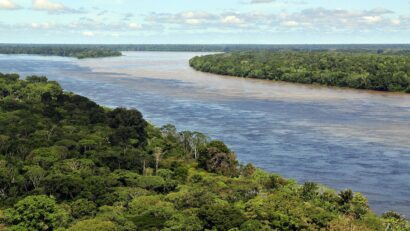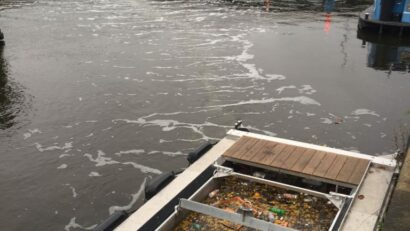
Lula da Silva keeps his promise: Amazon deforestation reduced by 64%
The deforestation of the Amazon rainforest has been in action for years, risking the collapse of the unique ecosystem. But the election of Lula da Silva as president in early 2023 brought hope. He announced that he would put an end to the deforestation of the Amazon. He seems to be keeping his promise as, compared to November 2022, deforestation in the Amazon fell by 64% in November 2023.
The Amazon rainforest is one of the largest carbon reservoirs on earth. This makes it particularly important in the fight against climate change. Despite this, illegal deforestation persists. This was especially evident under the right-wing nationalist ex-president Jair Bolsonaro. During his time in office, rainforest deforestation increased by around 75%.
The current president, Lula da Silva, promised to stop deforestation when he took office – and it looks like Silva is keeping his promise. Compared to the previous year, deforestation fell by 64% in November 2023. According to the Brazilian Space Agency (INPE), around 200 square kilometres were destroyed. This is the smallest area since the evaluations began. It is also the first time since 2018 that less than 10,000 square kilometres have been deforested in one year.
“Brazil is ready to resume its role in the fight against the climate crisis and protect all ecosystems, especially the Amazon. Our government once managed to reduce forest destruction by 80 per cent. Now let’s all fight together for zero deforestation!”
FIRST SUCCESSES AFTER JUST 6 MONTHS: RAINFOREST DEFORESTATION DOWN BY 33.6 PER CENT
After six months in office, the BBC report initial successes in the fight against deforestation. Compared to the first half of the previous year, deforestation has been reduced by 33.6%. In June 2023, 41% less forest was destroyed than in the previous year. Brazilian Environment Minister Marina Silva attributes this to Lula’s successful environmental policy.
LULA’S POTENTIAL TO REDUCE DEFORESTATION BY 89%
Lula’s goal of ending deforestation by 2030 is a major challenge. This is because deforestation reached alarming proportions under his predecessor Jair Bolsonaro. The new conservation plan published by President Lula at the beginning of June 2023 aims to achieve this goal. Among other things, it provides for the confiscation of half of all illegally used land within protected areas, as well as higher penalties for illegal deforestation.
The Brazilian president also calls on other countries – especially the rich West – to contribute financially to saving the “green lungs of the Earth” in order to combat the global climate crisis.
A study attests that Lula’s plans have the potential to actually reduce deforestation in the Amazon by 89%. In any case, Lula will not have an easy time of it. The left-wing president still faces a conservative majority in parliament.
UNDER BOLSONARO, THE AMAZON SHRANK BY MORE THAN TWICE THE AREA OF VIENNA – PER MONTH
This is sorely needed, as the Amazon has been badly affected in recent years. When Lula first moved into the presidential palace in 2003, he launched an ambitious programme to save the rainforest. He and his successor Dilma Rousseff, who like Lula comes from Brazil’s left-wing Workers’ Party, succeeded in reducing deforestation by 80% to a historic low. But when Bolsonaro came to power in 2019, Brazil made a U-turn in its environmental policy.
Bolsonaro willingly granted concessions to allow corporations to clear the rainforest for soya and palm oil cultivation, cattle breeding and mining. Illegally cleared areas were legalised by Bolsonaro and forest fires were only half-heartedly combated. Deforestation increased sharply by 70 per cent under his government.
FOR THE FIRST TIME, THE AMAZON EMITS MORE CO₂ THAN IT CAN CAPTURE
Under Bolsonaro, the Amazon’s carbon footprint has turned around. For the first time, it is emitting more CO2 than it can bind. This was revealed in a study by researchers from the French National Institute for Agronomic Research. The scientists mainly analysed satellite data documenting the plant biomass in the rainforest and its deforestation. The result: the Amazon basin released around 16.6 billion tonnes of CO₂ into the environment, but only absorbed around 13.9 tonnes. This 2.7 billion tonne difference is roughly Austria’s consumption for 35 years.
[embedded content]
WITHOUT A WELL-PRESERVED AMAZON RAINFOREST, THE ENTIRE ECOSYSTEM COULD COLLAPSE
The Amazon currently has a perfectly functioning water cycle. Inland regions actually have too little rainfall for a tropical rainforest. But the trees suck the groundwater upwards, it evaporates and rains down again over the huge forest area. This cycle could be permanently disrupted by further deforestation. The rainforest would slowly die off, turn into a savannah and change the climate around the world.
This process would release as much CO2 as the entire world consumes in seven years. The unique ecosystem, which is home to 10% of all species, would be irretrievably lost and with it the CO2-binding effect of the rainforest. Scientists assume that this tipping point is reached at a deforestation rate of 20 to 25%. We are currently at 18%.
ANTI-DEFORESTATION RAIDS AFTER TAKING OFFICE
Just a few days after taking office, Lula’s government took action and carried out controls in the rainforest against illegal deforestation. As reported by Reuters, checks were carried out in areas that are all within the Cachoeira Seca indigenous reserve, where deforestation is strictly prohibited.
While deforestation is decreasing, the number of fires continues to rise, as satellite monitoring shows. Whether this is due to natural causes or arson cannot be determined.
[embedded content]
This work is licensed under the Creative Common License. It can be republished for free, either translated or in the original language. In both cases, please cite Kontrast / Marco Pühringer as the original source/author and set a link to this article on Scoop.me. https://thebetter.news/amazon-deforestation-reduced/
The rights to the content remain with the original publisher. Läs mer…







